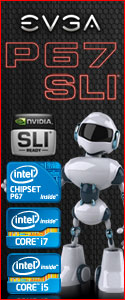The Xonar Essence ST Card Itself
The inner plastic carton holds the product, however the molding of the carton looks to be a little ‘tight’ as when the box was opened one of the pins on the card was ever so slightly bent. Asus needs to look into this.
At first glance the Xonar Essence has a resemblance to any other sound card, however this is a first glance only! After closer inspection we find many things that differ from a whole host of other sound cards clambering for the consumers attention. The most obvious difference being the analog output circuitry, it is shielded by a grounded metal cover. This cover is anodized black with a stylized image of a Chinese tiger printed in gold. The cover acts as a Faraday shield, preventing interference from contaminating the analog signals.
As one can see though the shield will do its job, the finish on the shield itself is a finger print ‘magnet’, however once the card is inside the case this will not be shown at all.
On the card’s exterior is a vertical array of jacks. From top to bottom, on the two gold-plated RCAs are the right and left analog line outputs, followed by the headphone output on a 6.3mm stereo phono jack. Below that, another 6.3mm stereo jack serves as both the line and microphone inputs, this can be selected by the use of the Xonar Software interface. Lastly is a RCA jack that provides a standard S/PDIF digital output capable of running at sample rates up to 192kHz.
With the above being mentioned one can already assume that this product is built for audiophiles in mind. It is with hopes that the product can actually slot into this role and not simply be relegated to the position of a ‘gamers card’ like so many products out there!
What is also noticeable is the gold capacitors placed all along the card and a great many placed around the headphone amplifier chip, it is good to see that Asus has indeed listened to what ‘Audiophiles’ have to say and implemented this in the design of the product.
One of the more interesting features of the Xonar Essence ST is the Texas Instruments 6120A2 headphone amplifier chip capable amplifier chip for headphones and can handle impedance up to 600 ohms! This chip is the basis of some standalone high-end headphone amplifiers.
The AV100 is the same C-Media OxygenHD (CMI8788) sound processor used on the rest of the Xonar line and on HDA/Bluegears/Auzentech cards. It provides a mixture of hardware and software support for DirectSound/DirectSound3D, OpenAL, and A3D.
It is interesting to note that Asus have chosen to implement a four-pin molex connector at the back of the card in order to power the headphone amplifier and to provide a cleaner signal to the capacitors, as the power from the PCI socket is not up to the task. One cannot see that the card should need the extra power for better sound, however for the headphone amplifier this would make sense!

















 Posted in
Posted in 






